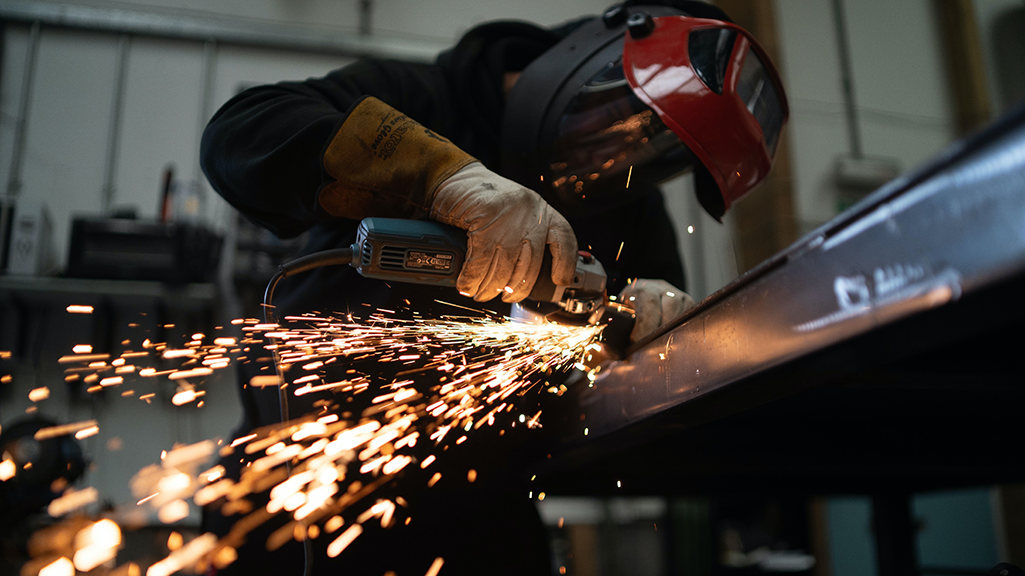Recycling – how metal becomes a sustainable material
How does a material as energy-intensive to extract as metal become sustainable? The solution lies in recycling. Recycling metal saves a large amount of resources and thus actively contributes to environmental protection. We will take a closer look at how exactly this works and what types of metal recycling there are in a moment.
Metal: Load-bearing elements for industry and everyday life
Metal is omnipresent in our lives. This applies to industry, with its machines and components, as well as to a large number of objects we use every day – from the clothes horse to the bicycle to electronic devices. The advantages of the material are manifold – it is stable, durable, electrically conductive and can be easily shaped and formed.
What is advantageous in metal processing and in the use of finished products, however, also has downsides in the production or mining of metal as a raw material: The extraction of iron ore or bauxite, from which aluminium is made, often goes hand in hand with necessary practices such as clearing forests, which are anything but beneficial for the environment. And because metallic raw materials are extracted from the earth’s surface, they are not renewable, unlike sustainable raw materials.
However, they can be recycled – and often to a very high degree. Let’s take a look at the potential of recycled metal as a sustainable material.

How can metal be recycled?
How can metal be recycled in a sustainable way? First and foremost, the recycling process requires proper waste separation so that the different types and alloys can be collected and processed. With the help of magnets, lasers and X-rays, the metal scrap is sorted and pressed into cubes, then crushed, cleaned and melted down before new products are made from it again.
Leftovers from metal production are also not neglected in the recycling process. For example, the so-called punching waste that is left over when products are punched out is fed back into the cycle so as not to waste valuable resources. This is also referred to as new scrap because the material is of high quality and excellent purity.
Incidentally, without the addition of scrap metal it would not be possible to produce many things at all, since in steel production, for example, the addition of scrap is not only sensible but even necessary.

The advantages of metal recycling
As with the recycling of plastics, the correct disposal, collection and recycling of metal that has exceeded its useful life provides a whole range of positive effects. This is true for industry as well as for consumers.
The most important benefits include the following.
- Conservation of resources:
Instead of polluting mining, metal recycling enables the further use of already extracted resources without leaving lasting traces on the planet that can harm the climate and people. The direction is right: 80 percent of the steel ever produced worldwide is still in the material cycle and is reused. - Reduzierter Energieverbrauch:
Not only is the energy required for the mining of metallic raw materials no longer necessary, energy is also saved in the production process itself with the addition of scrap metal, because the melting point for the iron ore to be melted is reduced by the addition of scrap metal. - Avoidance of CO2 emissions:
The reduced energy input is also accompanied by a better CO2 balance, because the recycling process enables significant savings in carbon dioxide emissions. An example? In 2018, the saving of CO2 in the EU through the use of scrap steel was around 93.8 million tonnes – the equivalent of all car traffic in France, the UK and Belgium combined. - Unlimited recycling without loss of quality:
Metals such as steel or aluminium can be recycled as often as desired without any loss of quality. In this way, less waste is created and used products, such as a bicycle frame, may eventually be turned into a wind turbine.

- Less dependence on imports:
The EU produces only a very small proportion of metal raw materials itself; most is imported from other continents. A focus on metal recycling can both reduce risky dependencies and minimise resource-intensive transport routes.
Conclusion: Metal is a model pupil in sustainability
Metal is therefore not only versatile and durable, but can also be described as a model pupil among sustainable materials through consistent recycling. The recycling of metal holds a multitude of advantages and is therefore worthwhile for everyday objects as well as in the steel industry and in metal processing companies such as the Rejlek Metal & Plastics Group.
The conscious use of resources and the avoidance of unnecessary waste are of great concern to us, which is why we always keep a sharp eye on this. You can find out more about our high-quality manufacturing process here.



